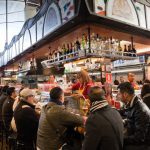Personality Matters—CM Top Down or Bottom Up
By Leslie Sachs
Configuration Management focuses on software process improvement in many important ways. This can include software configuration management along with application build, package and deployment. Some organizations are more open to change than others. If you want to be successful at bringing about positive change then you need to be able to assess and understand the personality of your organization along with identifying the key change agents who can help you get the job done. This article will help you get started.
Organizations have cultures that foster many traits that are often associated with specific personality types. For example, some organizations (e.g. hedge funds) are very insular with a strong air of secrecy. Others may promote an overt theme of creativity and exceptionalism. Individuals and teams within the organization also have identifiable personalities, which may be in alignment with the corporate culture or at odds with the status quo. Being at odds with the existing culture (and environment) is not always bad, but may impact how you are perceived by others, and ultimately your effectiveness. As Jurgen Appelo notes “a person’s behavior is a function of his or her personality and the environment.” [1]. Jurgen further notes that, “without the right team personality, it is hard to get any creativity out of a team.” [2]
To bring about change you need to assess and understand the culture of the organization and also the personalities of the teams (and team members). Keep in mind that there are many factors that may impact how a team operates – and each of the members, too. For example, some people operate solely as individuals and others are far more focused on being in alignment with the other members of the group. In psychology, there has been a tremendous amount of research on how individuals and teams operate. For example, “in many Asian cultures, personality is constructed on the basis of an alternative model of the person as interdependent. In these cultures, then, personality is experienced and understood as behavior that is characteristic of the person in relationship with others in particular social contexts.” [3] Understanding how the team and the organizations views itself is essential for bringing about positive change.
Bringing about positive change in many organizations must be a top-down endeavor with all stakeholders being given a clear directive by senior management. However, this is not always sufficient as some members of the team may be very skeptical having heard senior management make similar, or unfulfilled, proclamations in the past.
In our book on configuration management best practices[4], we discuss at length the importance of understanding team dynamics as a prerequisite to overcoming resistance to change. Make sure that you match your process to the culture of the organization. For example, some organizations really require a full explanation for the reason for any change in order to have the new rules or procedures be viewed as acceptable and fair. If you do not approach change in this manner, don’t be surprised when some members of the team show a creative ability to circumvent your proposed change.
Taking baby steps works well in some environments and others require a clear directive from senior management. My advice is to spend the necessary time speaking with key change agents and to carefully align your proposed changes with the existing culture.
Some traits to consider within the organization often mirror personality traits found in people. For example, conscientiousness and openness to other cultures are traits that are measured within the so called “big five” personality traits. [5] Understanding the people side of the organization will always help you design effective processes and procedures that are more likely to be accepted and implemented to bring about positive change.
Conclusion
Many organizations have clear and distinct cultures. The teams and individuals within them may also have specific personality traits that can impact how they operate within the existing ecosystem. If you want to bring about effective change then you need to align your efforts with the existing people and personalities that make up the organization.
References
[1] Appelo, Jurgen, Management 3.0 – Leading Agile Developers, Developing Agile Leaders. Addison-Wesley, 2011, p. 287
[2] Appelo, Jurgen, Management 3.0 – Leading Agile Developers, Developing Agile Leaders. Addison-Wesley, 2011, p. 64
[3] The Cultural Psychology of Personality – Journal of Cross-Cultural Psychology January 1998 29: 63-87
[4] Aiello, Robert and Leslie Sachs. Configuration Management Best Practices: Practical Methods that Work in the Real World. Addison-Wesley, 2010















